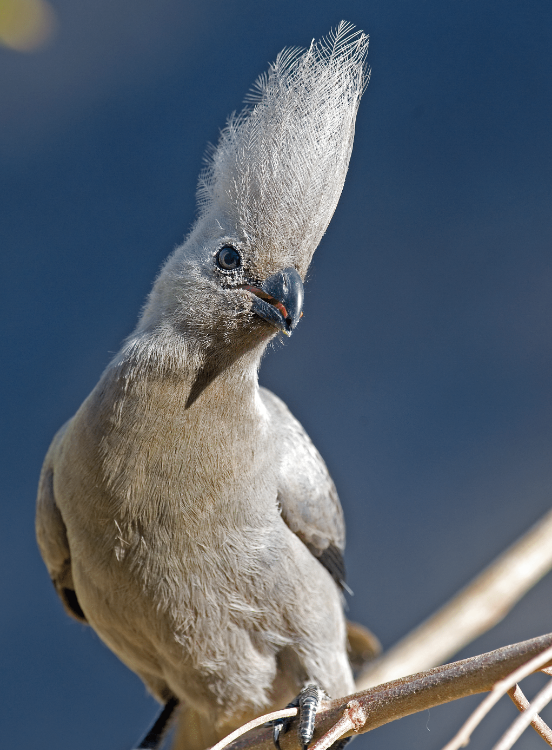Bird’s-eye view – Black Heron
December 5, 2012Bird’s-eye view – water thick-knee
December 5, 2012By Pompie Burger
Meyer’s Parrot, Poicephalus meyeri
Roberts No 364
The Meyer’s parrot is one of three parrots occurring in Namibia and is probably the most common and frequently seen of the three. It is also the most widespread of all brown parrots species in Africa. It is found from the central part of Namibia to the north-east, upwards into central Africa and further into Nigeria.
Like all parrots, Meyer’s Parrots have two toes at the front and two at the back, which are adapted to climbing around in trees and bushes.
They also use their bill, which is rather thick and adapted to use as an additional climbing tool.
Watching a Meyer’s Parrot eating fruit or berries is very entertaining; the bird holds the food in one ‘hand’ and then gradually eats it from the kernel, rather like a connoisseur drinking a vintage wine.
These birds are highly vocal, their call a loud, harsh screeching typical parrot-like piercing chee-chee sound. Unfortunately they are victims of collectors and sought after because of their talking ability. This puts them in danger of being wiped out. They have nomadic movement during the rainy season with significant influx into Namibia, their highest reporting rates in the Okavango Delta. They nest in old woodpecker or barbet nests in tree cavities, which might be re-used during successive years.
They differ from Rüppell’s Parrot in that they occur more to the eastern part of the country, they have a brown rather than a grey head, and their chests are green rather than the blue grey of Rüppell’s. Another feature is that they sometimes have a yellow bar across their crown. The main difference between them and Cape Parrots, which share their distribution in the Caprivi, is the fact that Cape Parrots are much bigger, and have red shoulders and tights.
About the author:
Based in Windhoek, Pompie Burger is an orthopaedic surgeon whose part-time passion is photography, in particular wildlife, and specifically birds. This regularly takes him to the most remote corners of the country, resulting in riveting images and articles.
Pompie is the author and photographer of the coffee table book Birds of Namibia, which was published in 2008. The book contains articles and photographs which attest to the insight and knowledge of an accomplished observer.
Read more of his articles in our Birding Section.
This article appeared in the Oct/Nov ‘08 edition of Travel News Namibia.


